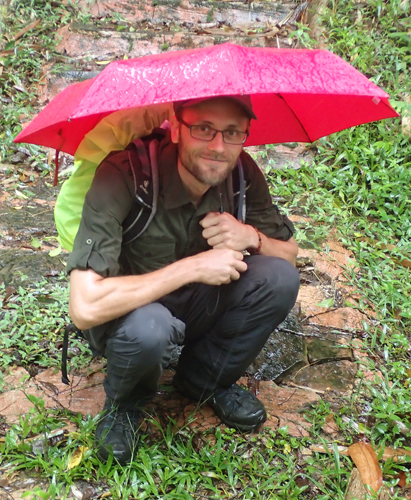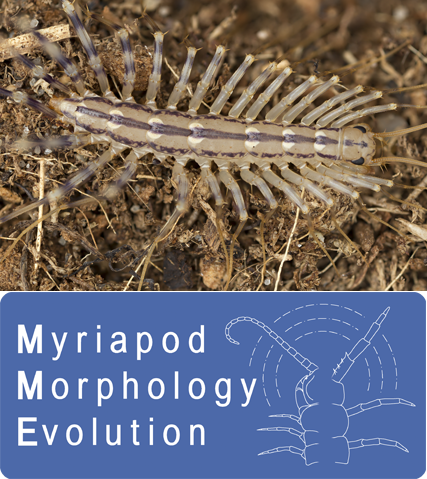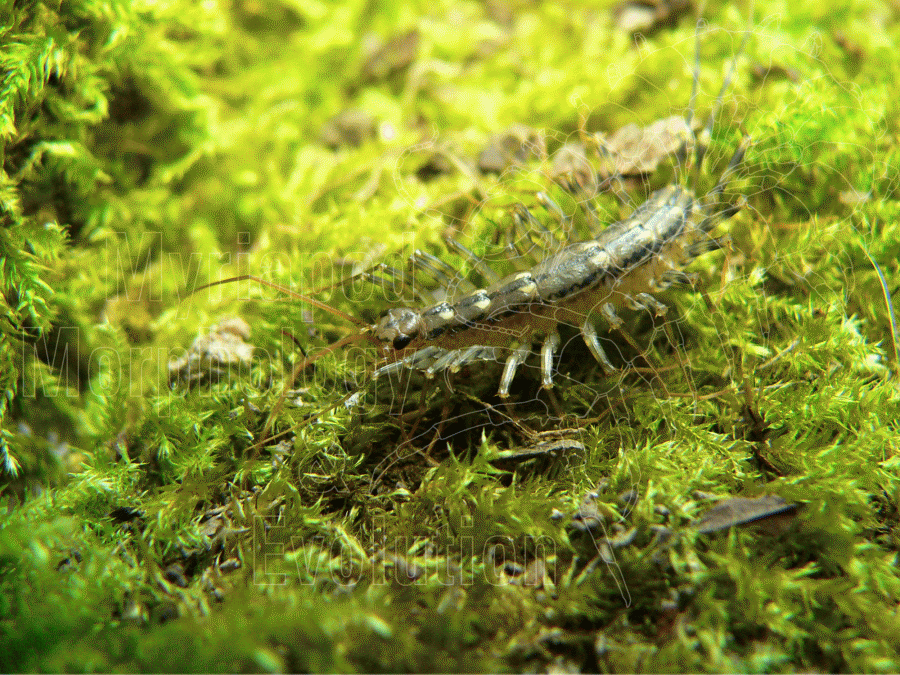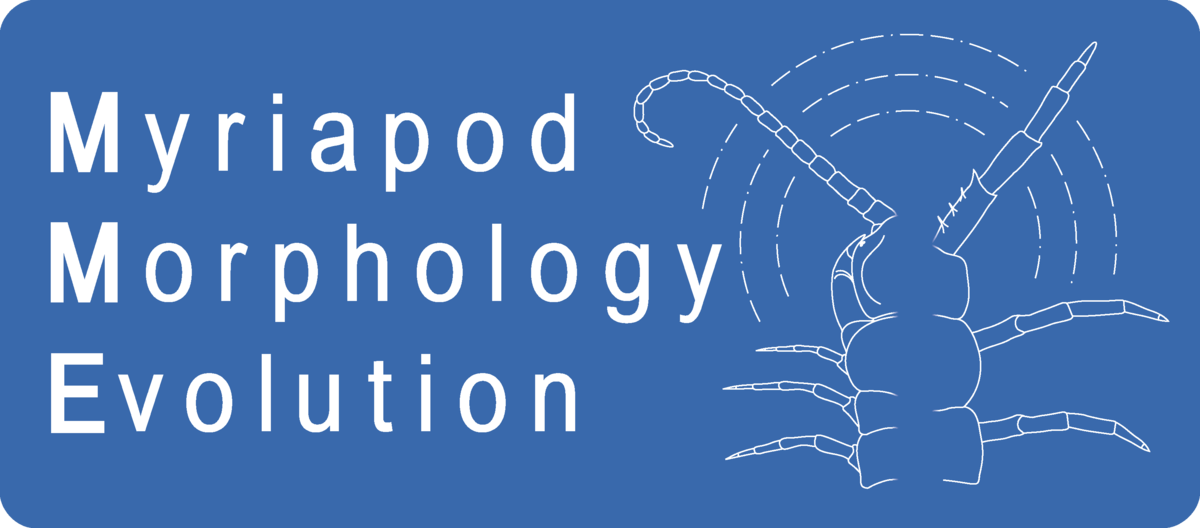
Dr. Matthes Kenning
Wissenschaftlicher Mitarbeiter
Zoologisches Institut und Museum
Allgemeine und Systematische Zoologie
Loitzer Str. 26, Haus 3.3
Cytologie und Evolutionsbiologie
Soldmannstr. 23, Haus 6.1
17489 Greifswald
Research topics
Form follows function?
The legs of arthropods are one, if not the eponymous key innovation of arthropods - the arthropodium.
In taking on a sheer plethora of functions including locomotion, food handling and ingestion, but also copulation, respiration, and sensation / reception, arthropodia are one of the most versatile, most specialized and hence, likely one of the most widely modified features known.
Among various taxa, these transformations have occured independently many times over, rendering arthropods and their legs in particular excellent models to study and understand pathways of adaptive evolution.
The aim of our project is to investigate the terminal legs of centipedes (Myriapoda), another significant but hitherto largely unregarded example of transformation cascades. The terminal (or ultimate) legs of chilopods are rarely used for locomotion, if at all. In contrast, in many cases the legs are transformed into a sensory appendage, resembling the antennae. Also, some species possess legs that rather might function as claws or pincers.
We explore this particular chilopod character in terms of distribution, morphology, variability, behaviroal adaptations as well as sensillar and glandular organization using a multimodal microscopic and electrophysiological approach. Comparisons with antennae and "real" walking legs will help us to unravel potential constructional or functional morphological constraints in the course of evolutionary transformation from former walking legs in what is now assumed to be a sensory appendage.
Greifswald Myriapod Group
- Matthes Kenning | nervous system, sensory organs, terminal legs
- Carlos A. Martínez-Muñoz | taxonomy and biogeography of Scolopendromorpha
- Carsten H.G. Müller | glandular systems, sensory organs, general morphology
- Jan D. Roy | nervous system, terminal legs
- Vanessa Schendel (alumna) | nervous system of Lithobiomorpha
- Andy Sombke | nervous system, sensory organs, general morphology
- Caroline Viertel (alumna) | nervous system


- Kenning M, Müller CHG, Sombke A (in rev.) The ultimate legs of Chilopoda (Myriapoda): a review on their morphological disparity and functional variability. PeerJ
- Kenning M, Sombke A (2017) Sensing from Both Ends? Transformation of Locomotory into Multifunctional Appendages in Chilopoda (Myriapoda). Tropical Natural History, Supplement 5: 22 (published abstract, 17th International Congress of Myriapodology).
- Kenning M, Lehmann P, Lindström M, Harzsch S (2015) Heading which way? Y-maze chemical assays – not all crustaceans are alike. Helogoland Marine Research. Download via www.springerlink.com
- Kenning M, Harzsch S (2013) Brain anatomy of the marine isopod Saduria entomon Linnaeus, 1758 (Valvifera, Isopoda) with special emphasis on the olfactory pathway. Frontiers in Neuroanatomy Open Access
- Kenning M, Müller C, Wirkner CS, Harzsch S (2013) The Malacostraca (Crustacea) from a neurophylogenetic perspective: new insights from brain architecture in Nebalia herbstii Leach, 1814 (Leptostraca, Phyllocarida). Zoologischer Anzeiger - A Journal of Comparative Zoology 252: 319-336 Download via www.springerlink.com
- Sombke A, Lipke E, Kenning M, Müller C, Hansson BS, Harzsch S (2012) Comparative analysis of deutocerebral neuropils in Chilopoda (Myriapoda): implicationjs for the evolution of the arthropod olfactory system and support for the Mandibulata concept. BMC Neuroscience 13: 1. Download via www.biomedcentral.com
- Krieger J, Sombke A, Seefluth F, Kenning M, Hansson BS, Harzsch S (2012) Comparative brain architecture of the European shore Crab Carcinus maenas (Brachyura) and the Common hermit Crab Pagurus bernhardus (Anomura). Cell and Tissue Research. 348(1):47-69. Download via www.springerlink.com
- Sandeman D, Kenning M, Harzsch S (2014) Adaptive trends in malacostracan brain form and function related to behaviour. In: Derby C and Thiel M (Eds.) Crustacean Nervous System and their Control of Behaviour. The Natural History of the Crustacea. Vol. 3, Oxford University Press.
- Loesel R, Wolf H, Kenning M, Harzsch S, Sombke A (2013) Architectural principles and evolution of the arthropod central nervous system. In: Minelli A (Eds.) Arthropod Biology and Evolution – Molecules, Development, Morphology, Springer, Berlin Heidelberg.
- International Conference of Invertebrate Morphology III, Berlin (2014)
- Graduiertentreffen Rauischholzhausen: Development and Plasticity of the Insect Nervous System (2014)
- Arthropod Neuro Network, Hamburg (2010)
- Institutssymposium Zoologisches Institut Universität Greifswald, Germany (2010)
- International Crustacean Congress VIII, Frankfurt (2014)
- 16. Crustaceologen Tagung, Greifswald (2013)
- 105. Jahrestagung der Deutschen Zoologischen Gesellschaft, Konstanz, (2012)
- 15. Tagung Deutschsprachige Crustaceologen, Regensburg (2011)
- 9th Göttingen Meeting of the German Neuroscience Society, Göttingen (2011)
- 103. Jahresversammlung der Deutschen Zoologischen Gesellschaft, Hamburg (2010)
- Arthropod Neuro Network, Hamburg (2010)
Deutsche Zoologische Gesellschaft (DZG)
Centre international de Myriapodologie (CIM)
Publications
(including book chapters and published abstracts)
2018
[11] Schendel V, Kenning M, Sombke A (in rev.) A comparative analysis of the ventral nerve cord of Lithobius forficatus (Chilopoda: Lithobiomorpha): morphology, neuroanatomy, and individually identifiable neurons. Arthropod Systematics & Phylogeny.
2017
[10] Kenning M, Müller CHG, Sombke A (2017) The ultimate legs of Chilopoda (Myriapoda): a review on their morphological disparity and functional variability. PeerJ 5:e4023. Open Access
[9] Kenning M, Sombke A (2017) Sensing from Both Ends? Transformation of Locomotory into Multifunctional Appendages in Chilopoda (Myriapoda). Tropical Natural History, Supplement 5: 22 (published abstract, 17th International Congress of Myriapodology). Link
2016
[8] Kenning M (2017) Evolution des olfaktorischen Systems der Isopoda: Einblicke aus Neuroanatomie und Ethologie von Saduria entomon (Valvifera) Linnaeus, 1758. Inaugural-Dissertation Universität Greifswald. 148 p.
2015
[7] Kenning M, Lehmann P, Lindström M, Harzsch S (2015) Heading which way? Y-maze chemical assays – not all crustaceans are alike. Helgoland Marine Research 69(3): 305-311. Link
2014
[6] Sandeman D, Kenning M, Harzsch S (2014) Adaptive trends in malacostracan brain form and function related to behavior. In: Derby C and Thiel M (Eds.) Crustacean Nervous System and their Control of Behavior. The Natural History of the Crustacea. Vol. 3. pp. 11–48. Oxford University Press.
2013
[5] Loesel R, Wolf H, Kenning M, Harzsch S, Sombke A (2013) Architectural principles and evolution of the arthropod central nervous system. In: Minelli A (Eds.) Arthropod Biology and Evolution – Molecules, Development, Morphology. pp. 299-342. Springer, Berlin. Link
[4] Kenning M, Harzsch S (2013) Brain anatomy of the marine isopod Saduria entomon Linnaeus, 1758 (Valvifera, Isopoda) with special emphasis on the olfactory pathway. Frontiers in Neuroanatomy Open Access
[3] Kenning M, Müller C, Wirkner CS, Harzsch S (2013) The Malacostraca (Crustacea) from a neurophylogenetic perspective: new insights from brain architecture in Nebalia herbstii Leach, 1814 (Leptostraca, Phyllocarida). Zoologischer Anzeiger - A Journal of Comparative Zoology 252: 319-336. Link
2012
[2] Sombke A, Lipke E, Kenning M, Müller C, Hansson BS, Harzsch S (2012) Comparative analysis of deutocerebral neuropils in Chilopoda (Myriapoda): implications for the evolution of the arthropod olfactory system and support for the Mandibulata concept. BMC Neuroscience 13: 1. Open Access
[1] Krieger J, Sombke A, Seefluth F, Kenning M, Hansson BS, Harzsch S (2012) Comparative brain architecture of the European shore Crab Carcinus maenas (Brachyura) and the Common hermit Crab Pagurus bernhardus (Anomura). Cell and Tissue Research. 348(1):47-69. Link

